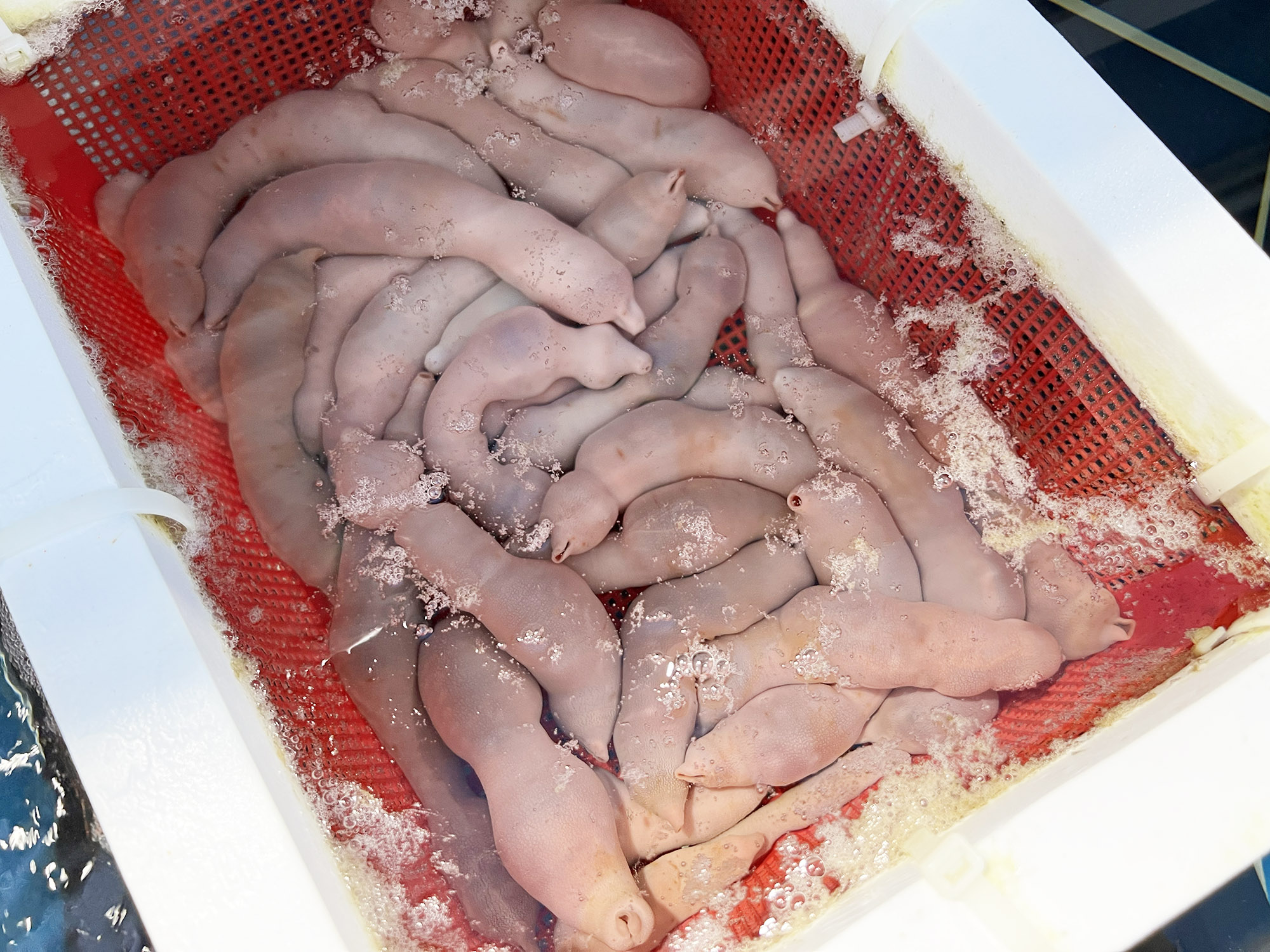BIG SALE - Up to 50% off food & beverage items - Free shipping on orders over $65
Gaebul – Korean Penis Fish

When I was visiting Ella in Korea, she took me to a traditional Korean seafood restaurant right across from Gijang Haenyeo Village. Haenyeo refers to the female divers who used to earn a living by diving for various sea delicacies, mainly around Jeju Island, but also at a few other locations in Korea.
According to Ella, you can still witness these female divers in action today, although their numbers have significantly decreased. While I’m not sure that our dinner was sourced by female divers, everything we had tasted incredibly fresh and delicious, as if it had just been plucked from the sea.
We had octopus, mussels, and a range of other unfamiliar treats including Gaebul, which is also known as penis fish because of..well, obvious reasons. Before we delve into the culinary aspects, let’s talk about what Gaebul actually is. Gaebul, scientifically known as Urechis unicinctus, is a marine worm that inhabits the coastal waters of Korea, Japan, and China. It’s long, cylindrical, and has an uncanny resemblance to a certain male anatomy, which has earned it the colloquial name “penis fish.” But don’t let its appearance deter you; there’s more to Gaebul than meets the eye.
In Korea, Gaebul holds a special place in the culinary tradition, and its consumption dates back centuries. It’s considered a delicacy and is often enjoyed raw. Gaebul is found in coastal regions, particularly during the winter months, when it’s at its prime.
The worms are typically harvested by hand and after harvesting, the Gaebul is thoroughly cleaned to remove sand and debris. It is then sliced open to remove the intestines and cleaned again, leaving only the succulent flesh. The cleaned Gaebul is often served fresh, sometimes wriggling on the plate, to demonstrate its freshness.
The texture is soft and slightly chewy, and it’s best enjoyed when sliced into thin strips. It’s often served with dipping sauces, such as soy sauce and vinegar or gochujang, to enhance the overall taste. So, what does Gaebul taste like? Well, it’s a taste that’s challenging to describe accurately. I would say it’s like a mix between clams and octopus, with a slightly briny, oceanic flavor. It’s surprisingly delicious!

Mitzie Mee - Sanne
Food & Recipes, Travel & Lifestyle, Beauty & Wellness.
South Korea
Mitzie Mee - Sanne
Welcome to Mitzie Mee, my blog about food, travel, and everything New York City. I mostly blog about recipes, food, and restaurants, but you will also see posts about nightlife, things to see and places to stay around the world. Your feedback means a lot to me, so please don't hesitate to reach out with questions or comments :)
South Korea
-
We came to Jeju for beach life and relaxation, but after arriving, it didn’t take long before we decided that of course we also had to get to the summit …
-
When I was visiting Ella in Korea, we went to Masan Fish Market, which is close to Ella’s old home. The market is a real foodie paradise, with so much …
-
It was Shinae who introduced us all to Oneunjeong on a trip to Seoul a couple of years ago. According to her, it is one of the best places to …
-
In Jeonju, we had dinner at Hankook Jib, which is a restaurant famous for its bibimbap. Bibimbap is a Korean dish with rice and various toppings including different kinds of …
-
When AC and I were visiting Korea, my Korean friend Shinae asked if we wanted to come to her brother’s wedding. At first, we were a bit hesitant to accept …
-
Dalgona (달고나, ppopgi in Korean), is a traditional Korean candy that goes back to the 1960s and 1970s, when kids in Korea would spend their pocket money on dalgona after …
-
When I was visiting Ella in Korea, she wanted to show me all the nicest places in the area around Busan and Masan, so we spend a lot of time …
-
Korea Furniture Museum consists of 10 traditional houses brought together from different locations and features more than 2500 pieces of traditional Korean furniture. The items are all part of the personal collection of the …
-
When I travel far, I am usually so jet-lagged that booking anything else, than the most basic crash pad, would be a waste of money. Of course, the room has …
-
I arrived in Seoul a few days before Pia, so I had booked a couple of nights in a guesthouse in Hongdae, which is a young and vibrant neighborhood close …
-
When we got back from our crazy Hallasan hike, we went straight to bed and slept for 12 hours. The following day our legs and feet were hurting like hell, …
-
Before jetting off in different directions, AC, Peter, Shinae and I had a couple of days together in Seoul, and one of the days, we decided to go biking along …
Advertisement:
Insurance for nomads
The SafetyWing Nomad Insurance is the first insurance product built specifically for nomads, by nomads. The insurance starts at only $56.28 per 4 weeks (ages 18-39, other ages available), making the SafetyWing Nomad Insurance one of the best insurance deals I have seen. Calculate your price here:

